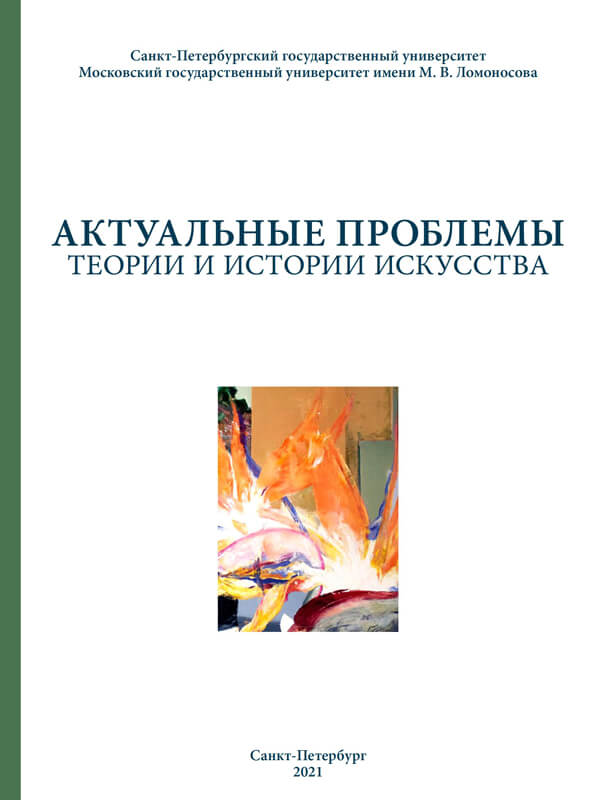Beauty and Ugliness in Italian Renaissance Art: Antithesis, Paradox, Oxymoron and Coincidence of Opposites
DOI:
https://doi.org/10.18688/aa2111-06-49Keywords:
ugliness, artistic theory, Renaissance, 16th century, CinquecentoAbstract
This paper analyses the way Italian paintings and artistic theory from the late Renaissance conceptualised ugliness, and gradually drew it closer to beauty. The first part of this article focuses on the traditional notion of ugliness as the mere opposite of beauty, in other words, ugliness as an expression of formal disharmony. The second part deals with the evolution from this conceptual antithesis to the paradoxical entwinement of these two notions, which led some authors to endow ugliness with qualities which had hitherto been applied to beauty. We consider several forms of ‘beautiful ugliness’: those of the “cruel and horrible” (Gabriele Paleotti) sacred paintings whose beauty resides in their faithful rendering of the Scriptures, or, in other words, in their truthfulness; those of the Silenus-like characters whose kindness pierces through revolting physical traits; those of the artistic ‘capricci’ who, under their apparent deformity, hide the ingenuity of their creator; and those who take up the Aristotelian paradox, according to which the correct imitation of ugliness arouses a feeling of pleasure among the spectator. In the Baroque aesthetic (third part), the ‘beautiful ugliness’ is an oxymoronic creation in which the horrifying content of the mimesis is consciously used in order to highlight, by contrast, the transformative power of the artist. The conceptualisation of caricature in the 17th century, which we mention in the fourth part of this work, suggests that beauty and ugliness, at least in their ideal forms, are in fact the two sides of a same coin.
References
Alberti L. B. De la Peinture. De Pictura (1435). Schefer J. L. (transl.). Paris, Macula Publ., 1992. 269 p. (in French and in Latin).
Barocchi P. (ed.). Trattati d’arte del Cinquecento, fra manierismo e Controriforma, vol. 2. Bari, Laterza Publ., 1960–1962. 699 p. (in Italian).
Barocchi P. (ed.). Trattati d’arte del Cinquecento, fra manierismo e Controriforma, vol. 3. Bari, Laterza Publ., 1960–1962. 720 p. (in Italian).
Barocchi P. (ed.). Le vite de’ più eccellenti pittori, scultori e architettori nelle redazioni del 1550 e 1568, vol. 6 testo. Firenze, Sansoni Publ., 1966–1987. 638 p. (in Italian).
Battisti E. L’Antirinascimento, con una appendice di manoscritti inediti. Milano, Feltrinelli Publ., 1962. 590 p. (in Italian).
Biondo M. Della nobilissima pittura. Venezia, alla insegna di Appolline Publ, 1549. (in Italian).
Chiquet O. Penser la laideur dans l’art italien de la Renaissance. Rennes, Presses Universitaires de Rennes Publ., under publication. (in French).
Della Casa G. Galateo. Prandi S. (ed.). Torino, Einaudi Publ., 2000. 124 p. (in Italian).
Di Stefano E. Bello e Idea nell’estetica del Seicento. Palermo, Centro Internazionale Studi di Estetica Publ., 2007. 86 p. (in Italian).
Gagnebin M. Fascination de la laideur. L’en deçà psychanalytique du laid. Lausanne, L’Âge d’Homme Publ., 1993. 333 p. (in French).
Haydn H. The Counter-Renaissance. New York, Charles Scribner’s Sons Publ., 1950. 705 p.
Hénin E. Ut pictura theatrum. Théâtre et peinture de la Renaissance italienne au classicisme français. Genève, Droz Publ., 2003. 707 p.(in French).
Lomazzo G. P. Scritti sulle arti, vol. 2. di Ciardi R. P. (ed.). Firenze, Centro Di Publ., 1974. 727 p. (in Italian).
Marino G. Opere, vol. 3, Pieri M.; Ruffino A. (eds.). Trento, La Finestra Publ., 2005. 423 p. (in Italian).
Ossola C. Autunno del Rinascimento. ‘‘Idea del tempio’’ dell’arte nell’ultimo Cinquecento. Firenze, Leo S. Olschki Publ., 1971. 310 p. (in Italian).
Pinelli A. La bella maniera. Artisti del Cinquecento tra regola e licenza. Torino, Einaudi Publ., 1993. 207 p. (in Italian).
Shearman J. Mannerism. London, Penguin; Baltimore Publ., 1967. 216 p.
Tasso T. Gerusalemme liberata. Varese C.; Arbizzoni G. (eds.). Milano, Ugo Mursia Publ., 1983. 621 p. (in Italian).


